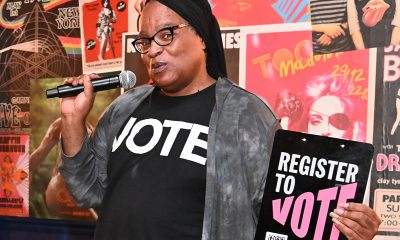a&e features
Out pianist cites Liberace, Alexander McQueen as major influences
Classical pianist Lachlan Glen on his recital with Ben Bliss and his inner diva
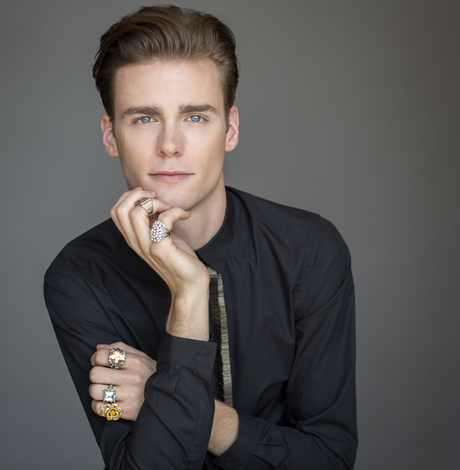
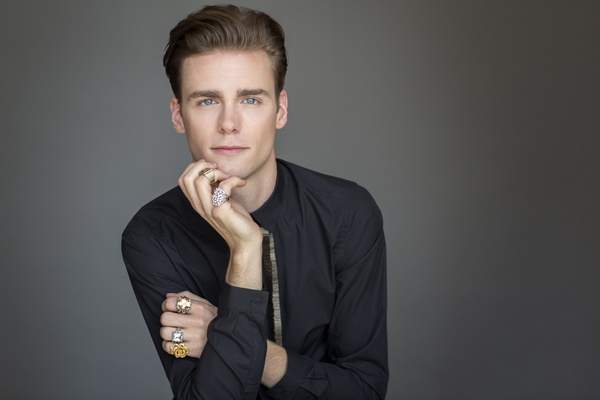
Juilliard-trained pianist Lachlan Glen says he enjoys accompanying traditional classical solo singers but is also excited about debuting a more over-the-top old school entertainment show in the tradition of Liberace in Australia next month. (Photo by Dario Acosta)
Vocal Arts D.C. presents
Ben Bliss (tenor) and Lachlan Glen (pianist)
Tuesday, Nov. 15
7:30 p.m.
Theatre of the Arts
University of the District of Columbia
Van Ness Campus
4200 Connecticut Ave., N.W.
$50
202-785-9727
washingtonperformingarts.org
Classical pianist Lachlan Glen calls himself a “performing entrepreneur with a passion for challenging the classical music industry’s status quo.”
The 27-year-old Sydney, Australia native, who came to New Jersey in 2008 to study at Rutgers University and then earned a master’s degree at Juilliard, will be in Washington on Tuesday, Nov. 15 for the fourth annual Gerald Perman Fund for Emerging Artists recital with tenor Ben Bliss. It’s also the first concert of Vocal Arts D.C.’s 26th season.
Out, proud and eager to balance traditional recitals with flashier, more show biz-type endeavors, he spoke with the Blade at length by phone from Atlanta (he lives in New York) where he was in rehearsal with Bliss. His comments have been edited for length.
WASHINGTON BLADE: You have no trace of an Australian accent. Why?
LACHLAN GLEN: I chose to let it go when I moved to New York. People usually had no idea what I was saying and … would always bring up stuff like shrimp on the barbie or ask me if I rode a kangaroo to school and all these, you know, kind of cute questions that get annoying when you’re asked them about 600 times. … I knew I’d succeeded when my diction teacher at Juillard had no idea I wasn’t American.
BLADE: How did you meet Ben Bliss?
GLEN: We met at the Metropolitan Opera — we met at the Met, that’s cute. … We kind of entered on the same wavelength of, “Let’s just do this music how we feel it.” So much thought at conservatory is put into thinking about or imagining how someone would have played certain notes 300 years ago and I really like to just be spontaneous and live my life on my terms. Ben and I decided to just have fun doing it and not get caught up with people who try to make it more serious than we believed it was. … I feel super lucky that we met and that he wants me to come and play with him on these shows. It’s a lot of fun.
BLADE: Did this conviction present problems for you at Juilliard?
GLEN: I had a really great experience there. I had a fantastic team of people and my teacher, Brian Zeger, who runs the vocal arts department there, he was one of my most valued mentors. … But I always loved things that sparkle, I love glitz and glamor and even when I was younger, I would perform in these crazy shirts. That kind of evolved into wearing a ton of rings. That kind of thing is just never done on the classical performance stage. … I have this Alexander McQueen bag that I take everywhere that’s gold and sparkly. I wake up in the morning and see it across the room on the floor and it gives me energy to get out of bed.
BLADE: So you’re basically a big unabashed flamer?
GLEN: (laughs) Yeah, I guess so. I just love things that make me happy and I’m not ashamed to embrace those things.
BLADE: So do you mind being more in the background when you’re accompanying Ben?
GLEN: No. I’m accompanying him so I’m helping him tell his story so I really tone down my own personality. I can’t overpower the singer when I’m in that capacity. So I leave the sparkly stuff at home and maybe just wear some rings. I’m working on a one-man show that’s more entertaining in kind of a throwback way, so there I can be as flashy as I want to be.
BLADE: You have all these different projects going on with conducting and offering vocal coaching in addition to what you just said. When and why did you branch out from wanting to be a more straight-up recitalist?
GLEN: I was training as a solo pianist and one day I just almost had a breakdown because I’d been spending like 10 hours a day practicing — and I’m not exaggerating even slightly — for years. I’d take little breaks, but I was essentially practicing all day every day for years and years. I finally said, “You know, I can’t do this for the rest of my life.” I’m a really social person and I need to spend time with people. Not just by myself in a room all day every day.
BLADE: Don’t your rings get in the way when you play?
GLEN: It depends how big they are. I try to find ones that don’t have a lot of weight in any one area. … It’s usually not much of an issue. I’ve definitely played concerts where I’ve had a ring on every finger.
BLADE: How many do you have?
GLEN: Oh, a huge bag. I definitely have more rings than anything else. I have this beautiful everyday topaz ring that my boyfriend gave me for my birthday this year which is from 1908. And many others.
BLADE: Tell me about him. Is it serious?
GLEN: His name is Sam. We’ve only been together since earlier this year though we met a little over three years ago at the Fire Island Opera Festival. But yes, it’s very serious. He’s 11 years older and is British. He’s a finance director at Christie’s in the impressionist and modern art department.
BLADE: How long have you been out?
GLEN: I came out to friends at 19, family at 20. It was a process. I would say I’m a Christian, but my understanding of Christianity is different from my parents. But (my boyfriend is) coming to Australia with me in December and my parents and sisters are very excited to meet him.
BLADE: Were you into classical music growing up or did you have a pop side too?
GLEN: More classical as a kid then in college came more of the pop stuff. I know it sounds strange, but I rarely listen to classical music now. … I have a huge obsession with Pink Floyd and I love Beyonce and Snarky Puppy and some really great jazz. I love Chick Corea.
BLADE: Is classical too close to work stuff to be enjoyable for pleasure listening?
GLEN: That kind of might be it. I have always liked to keep my professional life and home lives very separate, but it was never a conscious thing.
BLADE: Tell us more about your one-man show.
GLEN: I’ve always had a huge love for pianist entertainers and there are so few of them. Several great ones from the past, but the only one who’s even kind of still prominent in that vein is Elton John, but he’s more of a singer. … Liberace is first and foremost. People love to hate on him because he kind of sold this quote-unquote sacred music to a mainstream audience … but I love how he feels the music. He’ll take a Chopin piece and just spontaneously add an octave or something. He really knew how to read his audience. … I also loved Victor Borge and I think that kind of comedy is incredible. … So this will be me as an entertainer just talking and joking with the audience,. Really just me being fully myself without worrying about overshadowing anyone else on stage. Just the most over-the-top thing you could possible imagine playing some of the most beautiful piano music that’s ever been written along with some older pop songs and even jazz standards.
BLADE: Do you hope to tour it in the U.S.?
GLEN: I don’t really have the energy or time to shop it, sell it and book it myself so for this first performance in Australia, we’re going to video it and then hopefully shop it to some booking agents. … It takes quite awhile to develop a whole act like this so at first it won’t be the full finished product but it will be a start. … I cannot wait to get it going and see how it develops.
BLADE: There’s so much hand wringing in classical music as millennials just aren’t investing in our classical institutions the way Boomers and even Gen Xers have. Will they eventually or are some of these outfits just dying a long slow death in your opinion? What do you see happening in the big picture here?
GLEN: Both of those things are happening and the biggest part of the problem is that the classical music industry is using these business models that are in large part really, really old and not something that has come out of American culture. We’ve picked up these models from Europe and tried to transplant them and it doesn’t have the same value here. You can’t just pick up a cactus and try to plant it in Alaska. You need some kind of genetic modification or something if it’s going to thrive. A lot of the big opera companies are just large companies with lots of unions and lots of moving parts. They’re very heavy — opera by its very nature is big. So in an era where we have to adapt and be light on our feet, it’s just impossible for them to change course. … A lot of senior administration people tend to think that young people are too obsessed with their electronic devices to sit and watch an opera when they can just watch one aria on YouTube. … But what they’ve forgotten is that we are humans and we want to be together and we want to communicate and socialize and people will always be going out seeking bonds with other like-minded people. It’s not really the existential issue a lot of people think it is. … There are something like 30 small opera companies in New York alone right now and they’re selling out and people are obsessed with them. It’s just the spotlight shifting and companies that can function financially and artistically are having huge successes.
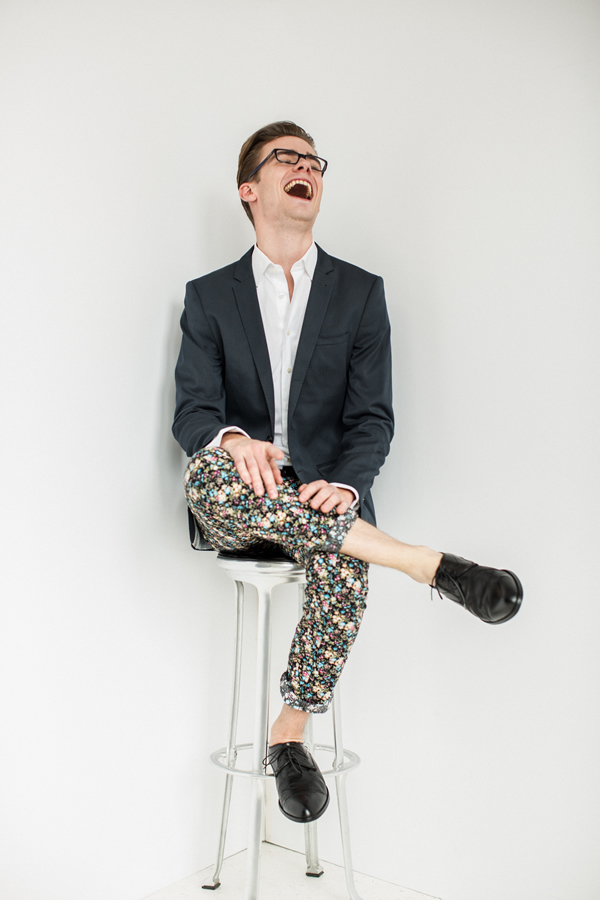
Lachlan Glen (Photo by Dario Acosta)
a&e features
Looking back at the 10 biggest A&E stories of 2025
‘Wicked,’ Lady Gaga’s new era, ‘Sexy’ Bailey and more

Although 2025 was a year marked by countless attacks on trans rights and political setbacks, the year also saw brilliant queer artists continuing to create art. From Cannes and Sundance Award winners now vying for Oscar consideration to pop icons entering new stages of their careers, queer people persevered to tell their stories through different media.
With the state of the world so uncertain, perhaps there’s no more vital time to celebrate our wins, as seen through some of this year’s top pop culture moments. While there’s no collection of 10 stories that fully encompass “the most important” news, here are some events that got the gays going:
10. ‘Mysterious Gaze of the Flamingo’ wins big at Cannes

The Cannes Film Festival has become a crucial start for films hoping to make their way to the Oscars, and first-time director Diego Céspedes won the top Un Certain Regard prize for his intimate western “The Mysterious Gaze of the Flamingo.” The film is set in the ‘80s and is intended as an allegory for the AIDS epidemic. Seeing a film that unpacks vital queer history win one of the most coveted awards at Cannes has been a huge point of pride in the independent filmmaking community.
Since the film bowed at Cannes, it has been selected as Chile’s Oscar entry in the Best International Feature race. Speaking with The Blade during the film’s AFI Fest run in October, Céspedes said: At first, I was kind of scared to have this campaign position in the times that we’re living [in] here. But at the same time, I think the Oscars mean a huge platform — a huge platform for art and politics.”
9. ‘The Last of Us’ returns for an even gayer season 2
While the first season of The Last of Us gave us one of TV’s most heartbreaking queer love stories in the episode “Long, Long Time,” Season 2 doubled down on its commitment to queer storytelling with the blossoming relationship between Ellie (Bella Ramsey) and Dina (Isabela Merced). The show expanded on the pair’s relationship in the original video game, making it perhaps the central dynamic to the entire season. That unfortunately came with more homophobic backlash on the internet, but those who checked out all the episodes saw a tender relationship form amid the show’s post-apocalyptic, often violent backdrop. For their performance, Ramsey was once again nominated for an Emmy, but Merced deserved just as much awards attention.
8. ‘Emilia Pérez’ sparks controversy
Jacques Audiard’s genre-bending trans musical “Emilia Pérez” proved to be an awards season juggernaut this time last year, winning the Golden Globe for Best Musical/Comedy. But when the lead star Karla Sofia Gascón’s racist, sexist, and homophobic old tweets resurfaced, the film’s Oscar campaign became a tough sell, especially after Netflix had tried so hard to sell Emilia Pérez as the “progressive” film to vote for. Mind you, the film had already received significant backlash from LGBTQ+ audiences and the Mexican community for its stereotypical and reductive portrayals, but the Gascón controversy made what was originally just social media backlash impossible to ignore. The only person who seemed to come out of the whole debacle unscathed was Zoe Saldaña, who won the Oscar for Best Supporting Actress over Ariana Grande.
7. ‘Sorry, Baby’ establishes Eva Victor as major talent
Back in January at the Sundance Film Festival, Eva Victor (known by many for her brand of sketch comedy) premiered their directorial debut “Sorry, Baby” to rave reviews, even winning the Waldo Salt Screening Award. Victor shadowed Jane Schoenbrun on the set of “I Saw the TV Glow,” and seeing Victor come into their own and establish such a strong voice immediately made them one of independent cinema’s most exciting new voices. A memorable scene in the film sees the main character, Agnes (played by Victor), struggling to check a box for male or female, just one example of how naturally queerness is woven into the fabric of the story.
Most recently, Victor was nominated for a Golden Globe for her performance in the film, and she’s represented in a category alongside Jennifer Lawrence (“Die My Love”), Jessie Buckley (“Hamnet”), Julia Roberts (“After the Hunt”), Renate Reinsve (“Sentimental Value”) and Tessa Thompson (“Hedda”). The film also received four Independent Spirit Award nominations overall.
6. Paul Reubens comes out in posthumous doc

While Paul Reubens never publicly came out as gay before passing away in 2023, the two-part documentary “Pee-wee as Himself” premiered back in May on HBO Max, giving the legendary comedian a chance to posthumously open up to the world. Directed by Matt Wolf, the documentary explores how Reubens found his alter ego Pee-Wee Herman and why he kept his private life private.
The documentary won an Emmy in the Outstanding Documentary or Nonfiction Special category and remains one of the most critically acclaimed titles of the year with a 100% Rotten Tomatoes score. Also worth noting, the National Geographic documentary Sally told the posthumous coming out story of Sally Ride through the help of her long-time partner, Tam O’Shaughnessy.
5. Lady Gaga releases ‘Mayhem’
Lady Gaga entered a new phase of her musical career with the release of Mayhem, her seventh album to date. From the frenzy-inducing pop hit Abracadabra to the memorable Bruno Mars duet featured on “Die With a Smile,” seeing Gaga return to her roots and make an album for the most die-hard of fans was especially rewarding after the underwhelming film releases of “House of Gucci” and “Joker: Folie à Deux.” Gaga has been touring with The Mayhem Ball since July, her first arena tour since 2018. She even extended her tour into 2026 with more North American dates, so the party isn’t stopping anytime soon. And Gaga is even set to make an appearance next May in “The Devil Wears Prada 2.”
4. Cynthia Erivo, Ariana Grande perform at the Oscars

While “Wicked: For Good” didn’t quite reach the heights of the first film, we will forever have Cynthia Erivo and Ariana Grande’s breathtaking live performance that opened the 97th Academy Awards. The pair sang a rendition of “Over the Rainbow,” “Home,” and “Defying Gravity,” paying proper homage to the original 1939 “Wizard of Oz.” Even non-Wicked fans can’t deny how magical and brilliantly staged this performance was. With both Erivo and Grande up for acting Oscars last year, they’re hoping to repeat success and make history with consecutive nominations. Either way, let’s hope there’s another live performance in the making, especially with two new original songs (The Girl in the Bubble and No Place Like Home) in the mix.
3. Indya Moore speaks out against Ryan Murphy
Indya Moore has consistently used social media as a platform for activism, and in September, posted a 30-minute Instagram live speaking out against “Pose” co-creator Ryan Murphy. Moore claimed that Murphy wasn’t being a true activist for trans people. “Ryan Murphy, we need you to do more. You need to address the racism, the violence, and the targeting of people on your productions, Ryan Murphy. You do need to make sure trans people are paid equally. Yes, Janet did the right thing,” Moore said. Murphy was also back in the headlines this year for the critically panned “All’s Fair” and the controversial “Monster: The Ed Gein Story” starring Laurie Metcalf and Charlie Hunnam.
2. Cole Escola wins Tony for Best Leading Actor
Few pop culture moments this year brought us together more than Cole Escola winning a Tony award for “Oh, Mary!” the Broadway show they created, wrote and starred in (we love a triple threat!) Escola made history by becoming the first nonbinary person to win a Tony in the leading actor category, and seeing them excitedly rush to the stage wearing a Bernadette Peters-inspired gown instantly became a viral social media moment.
The cherry on top of Escola’s major moment is the recent news that they are writing a Miss Piggy movie with Jennifer Lawrence and Emma Stone producing — news that also broke the internet for the better. We cannot wait!
1. Jonathan Bailey makes gay history as ‘Sexiest Man Alive’

The same year as his on-screen roles in blockbusters “Jurassic World Rebirth” and “Wicked: For Good,” Jonathan Bailey made history as the first openly gay man to be named People magazine’s “Sexiest Man Alive.” The fact that it took 40 years for an openly gay man to earn the title is a signifier of how far we still have to go with queer representation, and seeing Bailey celebrated is just one small step in the right direction.
“There’s so many people that want to do brilliant stuff who feel like they can’t,” he told PEOPLE, “and I know the LGBT sector is under immense threat at the moment. So it’s been amazing to meet people who have the expertise and see potential that I could have only dreamed of.” In 2024, Bailey founded the charity titled The Shameless Fund, which raises money for LGBTQ+ organizations.
a&e features
Your guide to D.C.’s queer New Year’s Eve parties
Ring in 2026 with drag, leather, Champagne, and more

With Christmas in the rear view mirror, we can turn our attention to ringing in a much-anticipated New Year with a slew of local LGBTQ parties. Here’s what’s on tap.
Pitchers
This spacious Adams Morgan bar is hosting the “Pitchers’ Perfect New Year’s Eve.” There will be a midnight Champagne toast, the ball drop on the big screens, and no cover, all night long. The bar doesn’t close until 4 a.m., and the kitchen will be open late (though not until close). All five floors will be open for the party, and party favors are promised.
Trade
D.C.’s hottest bar/club combo is leaning into the Shark motif with its NYE party, “Feeding Frenzy.” The party is a “glitterati-infused Naughty-cal New Year’s Even in the Shark Tank, where the boats are churning and the sharks are circling.” Trade also boasts no cover charge, with doors opening at 5 p.m. and the aforementioned Shark Tank opening at 9 p.m.. Four DJs will be spread across the two spaces; midnight hostess is played by Vagenesis and the two sea sirens sensuously calling are Anathema and Justin Williams.
Number Nine
While Trade will have two DJs as part of one party, Number Nine will host two separate parties, one on each floor. The first floor is classic Number Nine, a more casual-style event with the countdown on TVs and a Champagne midnight toast. There will be no cover and doors open at 5 p.m. Upstairs will be hosted by Capital Sapphics for its second annual NYE gathering. Tickets (about $50) include a midnight Champagne toast, curated drink menu, sapphic DJ set by Rijak, and tarot readings by Yooji.
Crush
Crush will kick off NYE with a free drag bingo at 8 p.m. for the early birds. Post-bingo, there will be a cover for the rest of the evening, featuring two DJs. The cover ($20 limited pre-sale that includes line skip until 11 p.m.; $25 at the door after 9 p.m.) includes one free N/A or Crush, a Champagne toast, and party favors (“the legal kind”). More details on Eventbrite.
Bunker
This subterranean lair is hosting a NYE party entitled “Frosted & Fur: Aspen After Dark New Year’s Eve Celebration.” Arriety from Rupaul Season 15 is set to host, with International DJ Alex Lo. Doors open at 9 p.m. and close at 3 p.m.; there is a midnight Champagne toast. Cover is $25, plus an optional $99 all-you-can-drink package.
District Eagle
This leather-focused bar is hosting “Bulge” for its NYE party. Each District Eagle floor will have its own music and vibe. Doors run from 7 p.m.-3 a.m. and cover is $15. There will be a Champagne toast at midnight, as well as drink specials during the event.
Kiki, Shakiki
Kiki and its new sister bar program Shakiki (in the old Shakers space) will have the same type of party on New Year’s Eve. Both bars open their doors at 5 p.m. and stay open until closing time. Both will offer a Champagne toast at midnight. At Kiki, DJ Vodkatrina will play; at Shakiki, it’ll be DJ Alex Love. Kiki keeps the party going on New Year’s Day, opening at 2 p.m., to celebrate Kiki’s fourth anniversary. There will be a drag show at 6 p.m. and an early 2000s dance party 4-8 p.m.
Spark
This bar and its new menu of alcoholic and twin N/A drinks will host a NYE party with music by DJ Emerald Fox. Given this menu, there will be a complimentary toast at midnight, guests can choose either sparkling wine with or without alcohol. No cover, but Spark is also offering optional wristbands at the door for $35 open bar 11 p.m.-1 a.m. (mid-shelf liquor & all NA drinks).
a&e features
Local, last-minute holiday gift ideas
Celebrate the season while supporting area businesses

The DowntownDC Holiday Market is bustling. Union Station is decked out with its annual Christmas tree. Washingtonians have wrapped their houses and apartment balconies with festive lights and holiday decorations. The holiday season is here. And with stockings to fill and empty space under the tree, Washington’s local shops and artists have plenty to offer.
Show your LGBTQ and D.C. pride with the Washington Blade’s annual holiday gift guide.
To embrace the holiday buzz: The Blanco Nwèl cocktail from Alchy Cocktails. This Caribbean eggnog is one of Alchy Cocktail’s seasonal holiday cocktails. The flavor profile is similar to coquito, a traditional Puerto Rican Christmas drink with a coconut base. As a queer and Caribbean-owned business, Alchy Cocktails has been based out of Washington since 2021. Blanco Nwèl is available in both cocktail ($24) and mocktail ($12) online and at a variety of holiday markets, including the Tingey Plaza Holiday Market, the Flea Market at Eastern Market, Union Station’s Main Hall Holiday Market, and more. ($24)
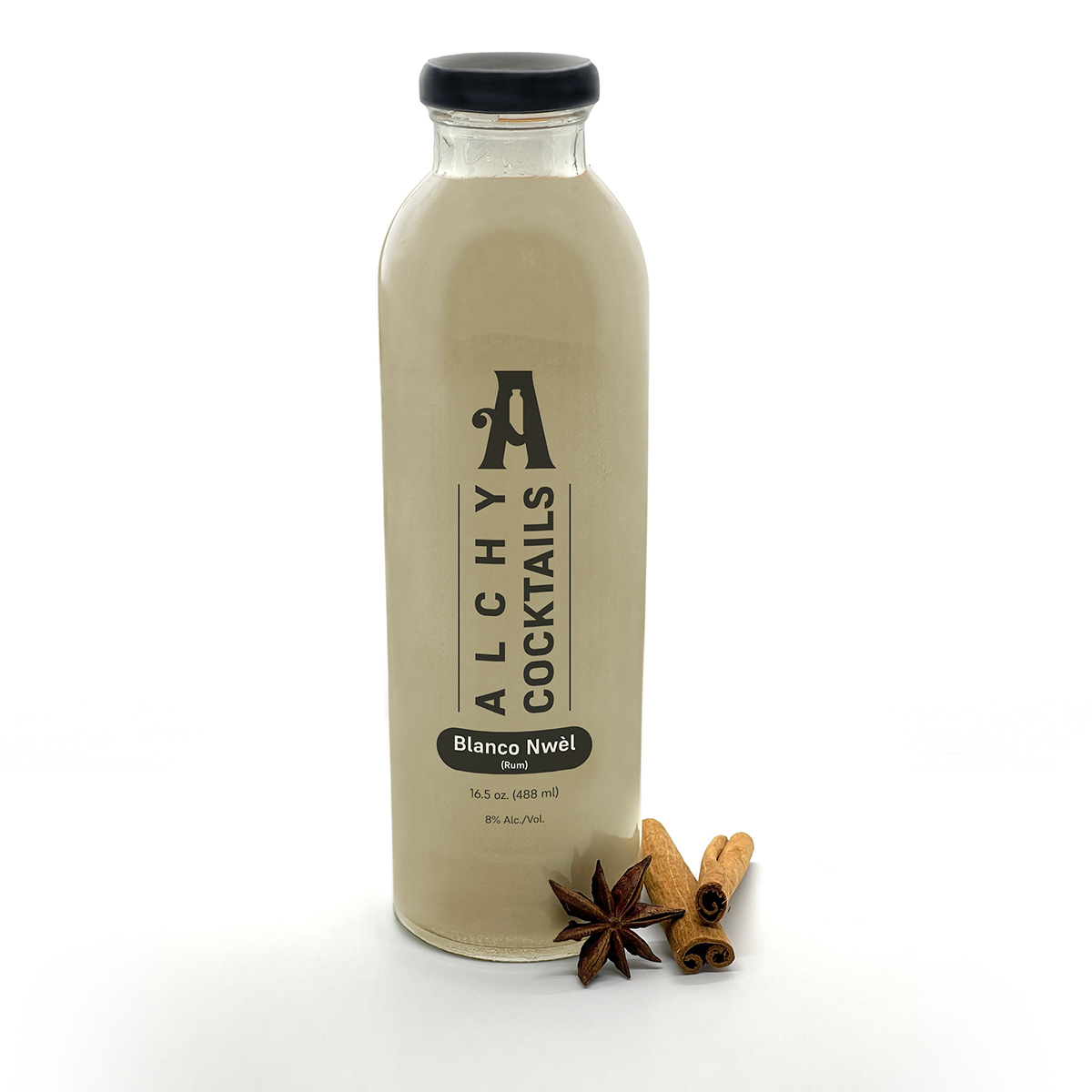
A spicy bite: Gordy’s Cajun Okra from Salt and Sundry. These spicy, tangy pickles pull on Southern Cajun-style flavors, packing a punch with paprika, cayenne, and more. Gordy’s is an LGBTQ-owned and Washington-based brand, making this gift an opportunity to support a local LGBTQ business straight from the jar. This pantry staple is available on Salt & Sundry’s website and at its locations in Union Market, Logan Circle, and its Georgetown holiday pop-up store. ($14)
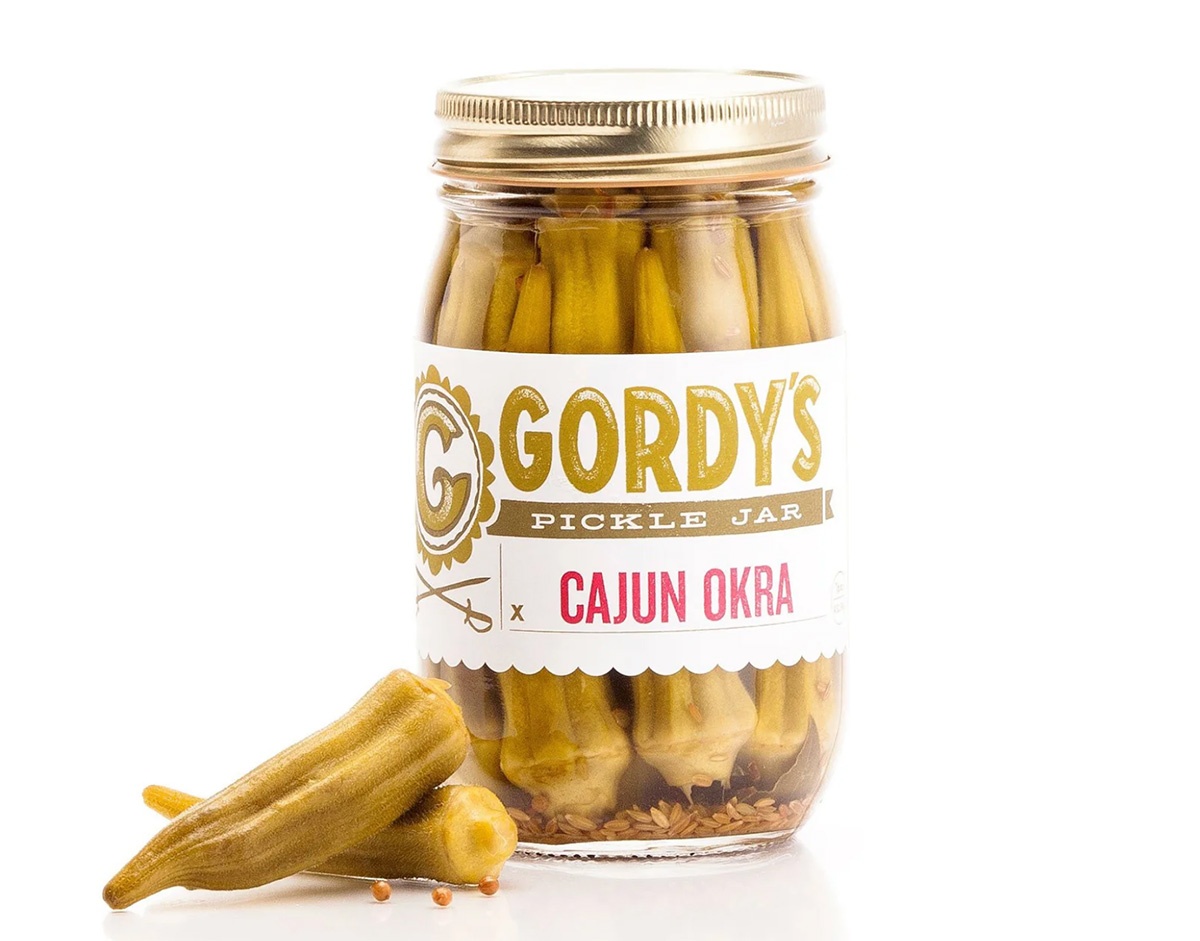

To celebrate Washington pride: The DC Landmark Tote Bag from The Neighborgoods. Native Washingtonians, visitors, friends and family alike will find something to love about this Washington-themed tote bag. Food trucks, the 9:30 Club, the Metro logo and pandas from the National Zoo are just some of the city’s landmarks depicted across the tote in a red, white, and blue color palette. The tote is a part of the DC Landmarks collection, which donates 10 percent of its sales to the American Civil Liberties Union. The Neighborgoods itself is a local, woman-owned business built out of a passion for screen-printing in 2013. The 100 percent cotton canvas tote is for sale online or at the DowntownDC Holiday Market. ($22)
To give friends and family their flowers: The Flowers Bandana from All Very Goods. This 100 percent cotton bandana was designed in Washington and hand printed in India. Its uniqueness comes in being covered with the faces of Black women, representing a “love letter to all women but especially Black women,” according to All Very Goods. The Black woman-owned and operated business, based out of Northwest Washington, has a mission to celebrate diversity and representation through its products. The bandana intends to give Black women their “flowers.” The Flowers bandana is available for purchase online. ($24)
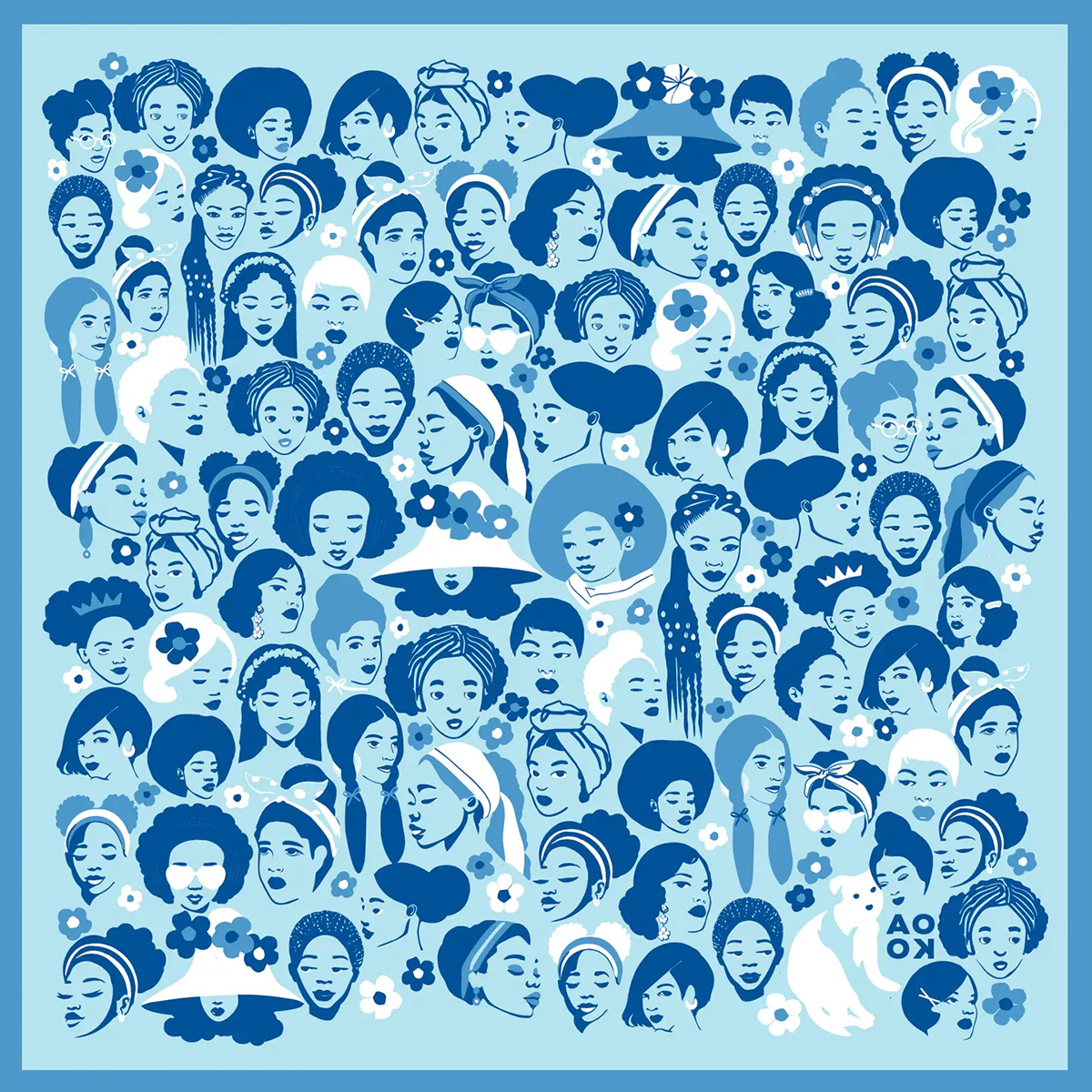
To unlock culinary creativity: The Curious Chef Gift Collection from Each Peach Market. This customizable collection of kitchen oddities — ranging from tinned fish to chili oil — is a quirky gift for the most inventive chefs. The collection is available in a Standard Santa, Extra Goodies and Super Holiday Size for up to $165. The Washington-based market, founded in 2013, permits customers to make the collection special by specifying what unique ingredients are packaged, including products made by local or LGBTQ brands. Each Peach Market offers assembly and pick up in-person at its Mount Pleasant shop and also offers local delivery and nationwide shipping via its website. ($85)

To give a touch of sweetness: The DC Landmark Chocolate Covered Oreo Holiday Cookies from Capital Candy Jar. Wrapped in a festive red bow, this box of nine cookies embraces love for Washington and the holiday season in one. Among the dark and milk chocolate covered cookies are images of the U.S. Capitol, the White House, the Lincoln Memorial, the Jefferson Memorial and festive hollies. The treat, packaged in a Hill East facility just a few blocks from the Capitol, is available for purchase online and at the DowntownDC Holiday Market. ($23.95)
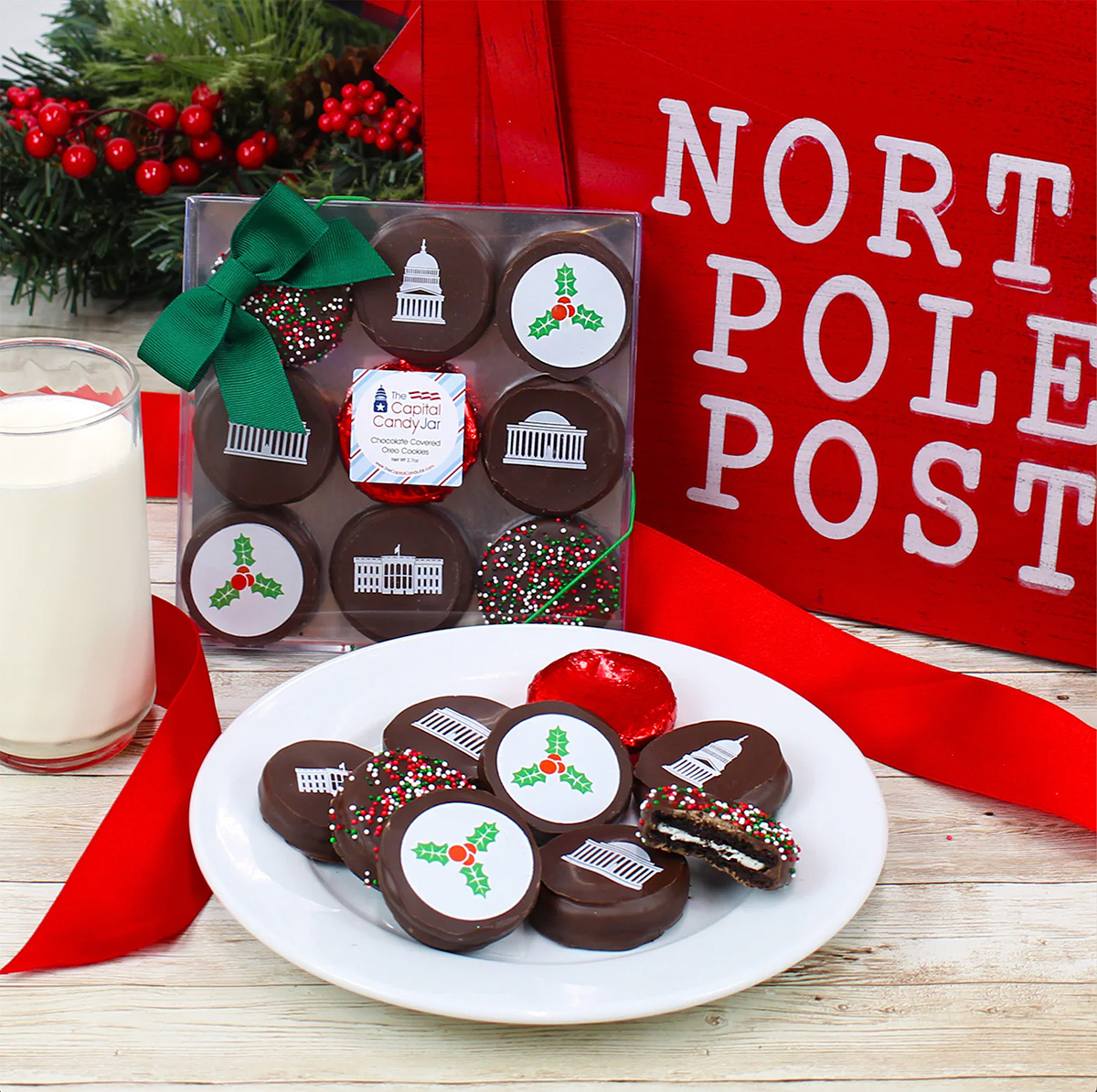

To celebrate queer gaming: Thirsty Sword Lesbians from Labyrinth Games & Puzzles. This roleplaying game embraces lesbian culture by unlocking a world of swords, romance, and battle. Ideal for group settings, the book presents a system of world building and character identities that are best brought to life by creative minds. Labyrinth, which has been a local Washington business for more than 15 years, celebrates non-digital fun through games and puzzles that connect the community. This gift is offered online and at Labyrinth’s Capitol Hill location. ($29.99)
To make a bold statement: The “Resist” T-shirt from Propper Topper. This locally screen-printed black tee features the Washington flag designed within a raised fist, symbolizing both Washington pride, and political resistance. The shirt is made exclusively by Propper Topper, a local Washington business that evolved from a hat shop to a gift store since opening in 1990. The tri-blend unisex shirt is available both for pickup at Propper Topper’s Cathedral Heights location and shipping via the online site. ($32)
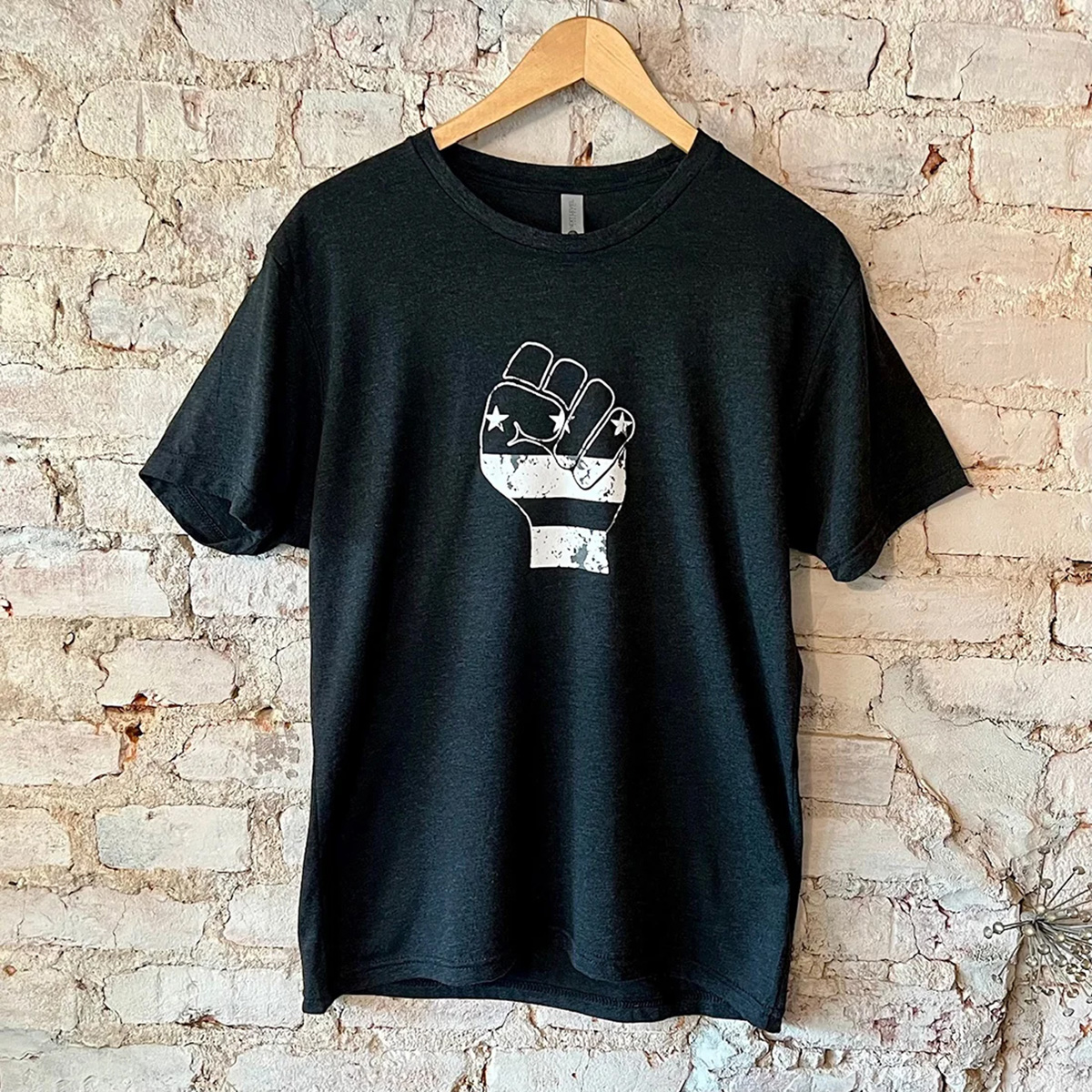
To keep it c(g)lassy: The Glass Ball earrings from Blue Moon Aquarius. Gifting can rarely go wrong when it comes to a new pair of earrings. The unique statement earrings — made of polymer clay, glass, and 18k gold plating over surgical steel — are hand cut, sanded and assembled in Washington, meaning each set is unique. Blue Moon Aquarius, a local brand, is known for its small batch jewelry and home decor designed with clay materials. Available in oxblood, hunter green, lavender, and bluestone color palettes, these earrings are available for purchase on Blue Moon Aquarius’ website and at the DowntownDC Holiday Market. ($48)
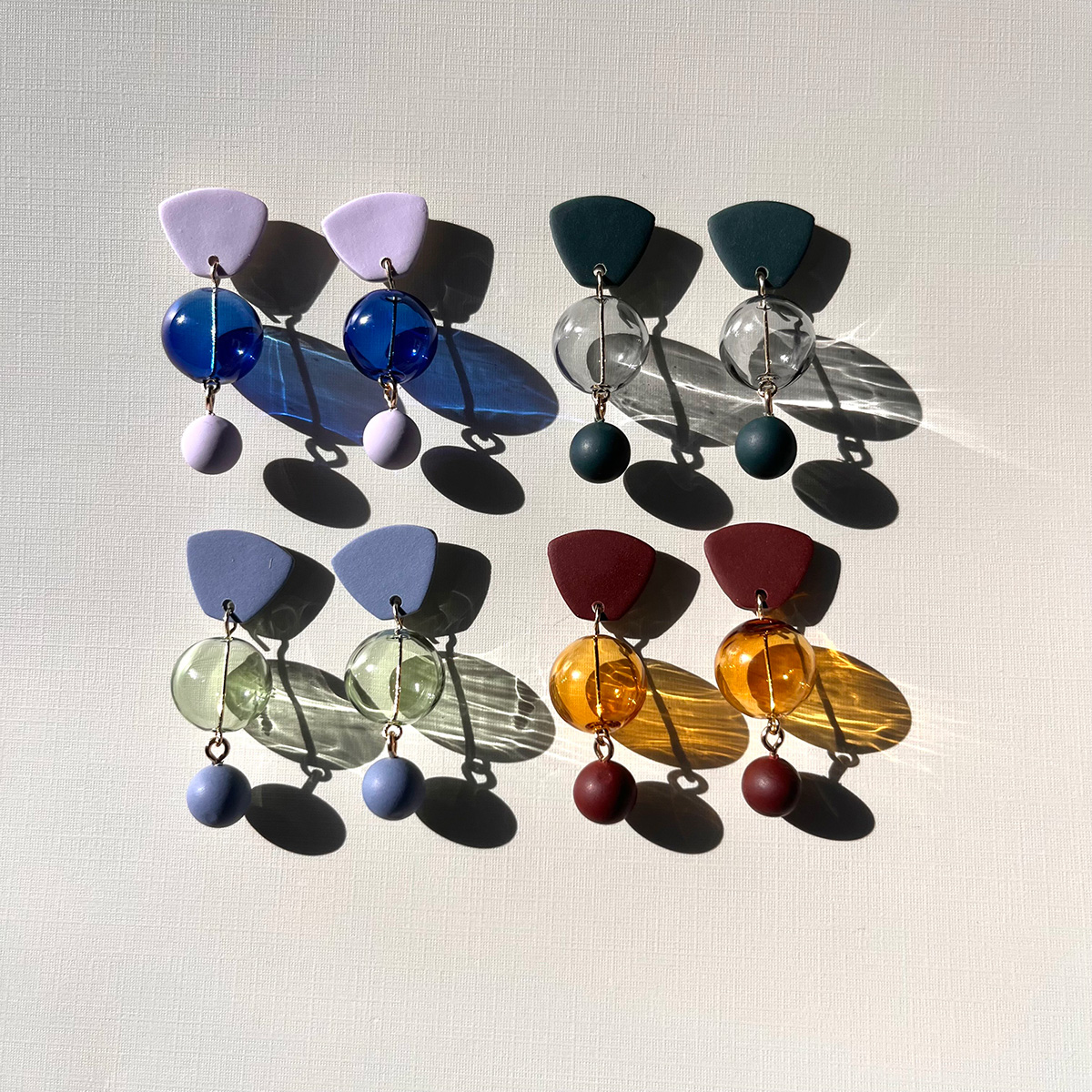
To elevate a holiday tea or charcuterie party: The Honey Flight: Tea Lover’s Selection from BannerBee. This local honey company presents the ideal gift to make cozying up with a cup of tea slightly more special. The Honey Flight contains three types of raw wildflower honey infused with fair trade Ugandan vanilla bean, chai spices, and locally sourced lemon thyme herb. The gift is also an opportunity to uplift a family company based in the Mid-Atlantic that offers all-natural, sustainable products. The flight is available online, at the DowntownDC Holiday Market or at the Arlington Courthouse and Dupont Farmers’ Markets. ($36)
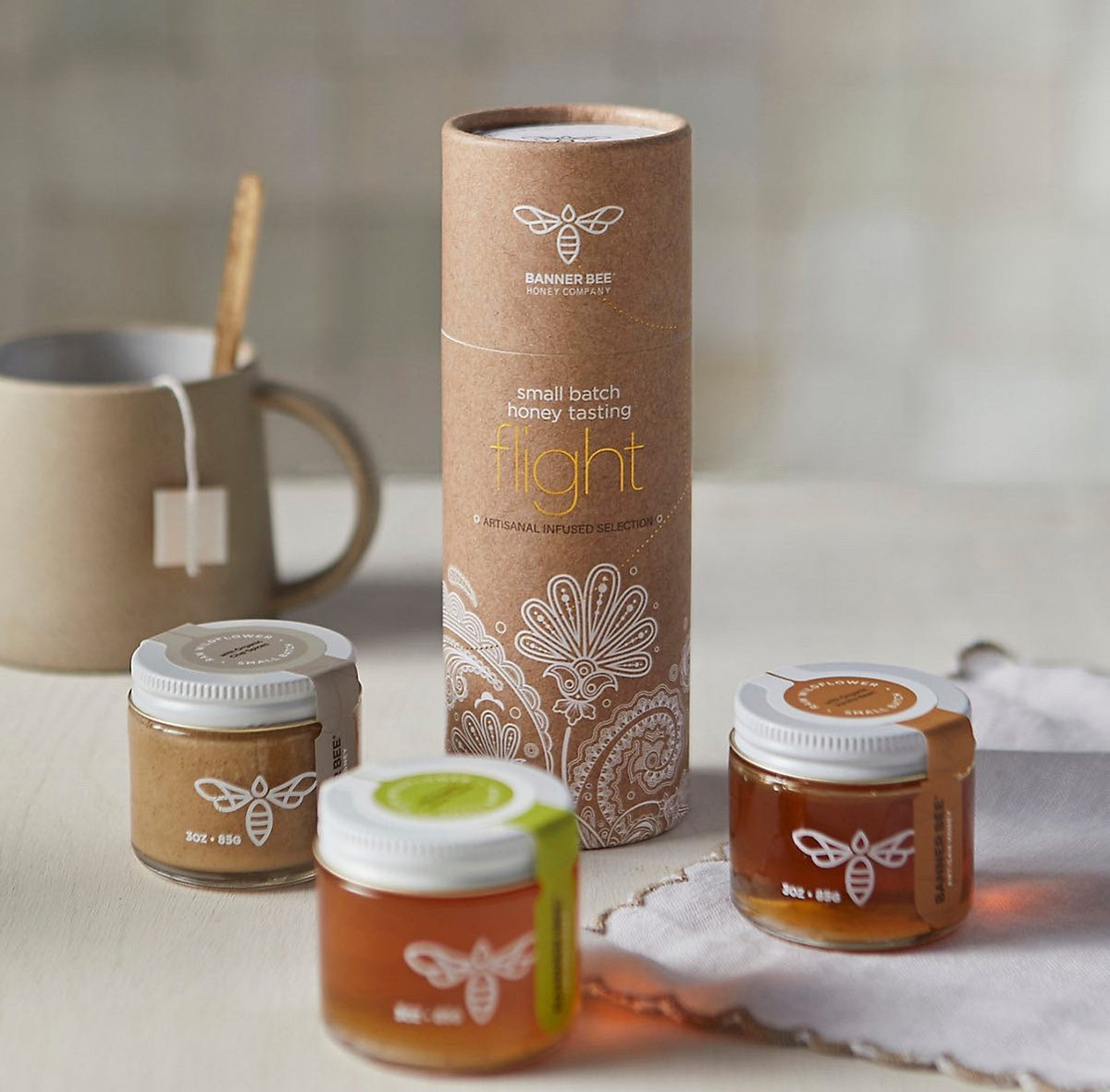
For Baltimore shoppers: If you’re in Charm City, don’t miss Balston Mercantile, opened by a gay couple in June. Their gorgeous shop in the Hampden neighborhood offers an array of unique, upscale finds, from barware and artwork to cookbooks and home decor and more. (849 W. 36th St.)

